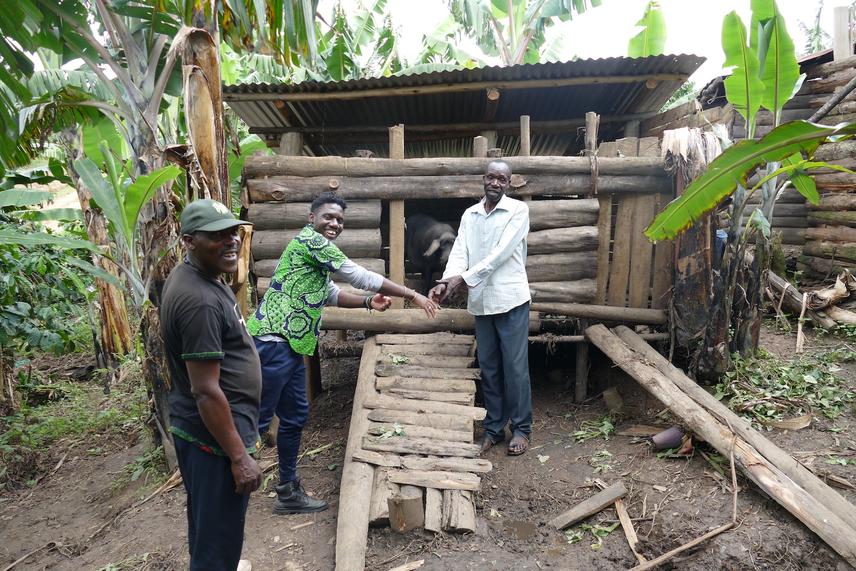Badru Mugerwa
Other projects
14 Oct 2020
Improving Local Capacity for Acoustic-Based Wildlife and Law Enforcement Monitoring in Bwindi Impenetrable National Park, Uganda
20 Apr 2023
Pigs and SACCOs: Local Community Tools Against Poaching and its Impacts on African Golden Cats at Uganda’s Bwindi Impenetrable National Park
Unlike many Afrotropical forests, Bwindi Impenetrable National Park is not under pressure from farming encroachment or illegal logging, mainly due to the attention that the park has received for its half of the world’s mountain gorilla (Gorilla beringei beringei) population. Bwindi is, however, experiencing hunting pressure (Mugerwa et al., 2013). This project is tackling snare bushmeat hunting, consumption, and trade as a pervasive threat to the African golden cat (hereafter “AGC”) at Bwindi. Snares are non-selective, killing or maiming non-target species, including the AGC (Mugerwa et al., 2020). I call this “collateral damage of indiscriminate bushmeat hunting.”

Embaka's Community-led Livestock for Bushmeat program providing an alternative source of animal protein and income to bushmeat hunting. © Embaka.
The root cause of hunting at Bwindi is poverty, stemming from limited employment opportunities, resulting in households struggling to access animal protein, family income, or basic health care. This project continues Embaka's ongoing community-led conservation activities and establishes a permanent, standardized camera-trap system for monitoring the AGC, allowing us to evaluate the impact of our community-led conservation efforts on the species’ population status.
The project activities will include 1) establishing a permanent, standardized camera-trap system for monitoring the AGC, 2) extending and continuing community-led dialogue against hunting through our Hunters to Protectors (H2P) program, 3) extending and continuing locally acceptable alternative sources of animal protein to bushmeat through our Livestock to Bushmeat (L4B) program, and 4) extending and continuing Savings and Credit Cooperatives (SACCO) as alternative sources of income to bushmeat trade through our Conservation Pesa (CPesa) program. These activities are part of ongoing community-led conservation initiatives involving 2,250 people around Bwindi.
Our project stakeholders and beneficiaries are the marginalized rural households living within 1 km of Bwindi who engage most in poaching, receive the least economic benefits from government and conservation programs, interact most with wildlife through Human-Wildlife Conflict, and have the poorest attitudes to conservation (Harrison et al., 2015). The H2P program inspires community dialogue and the needed social pressure against bushmeat hunting. The L4B program is implemented as a livestock seed bank, where female livestock is given to a hunting family with the pledge that they stop poaching. When the livestock produces offspring, the family donates one female offspring to the nearest neighbor. This way, our activities not only benefit the hunting households but the whole community. Through loans and savings, the CPesa program facilitates togetherness among local families against hunting. We will extend these programs to additional households. The outcome will be an expanded community-based anti-poaching movement.
Header image: Embaka's Community-led Hunters to Protectors (H2P) program inspires community dialogue against bushmeat hunting. © Embaka.